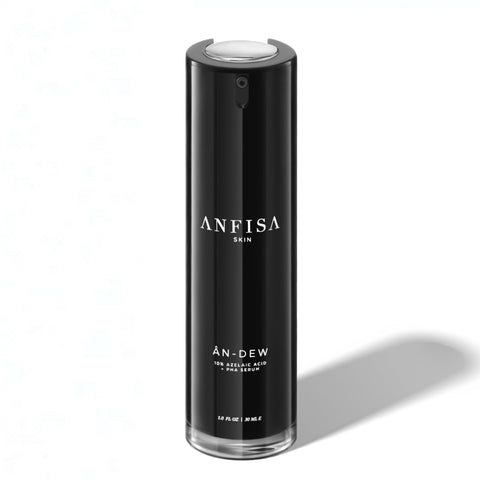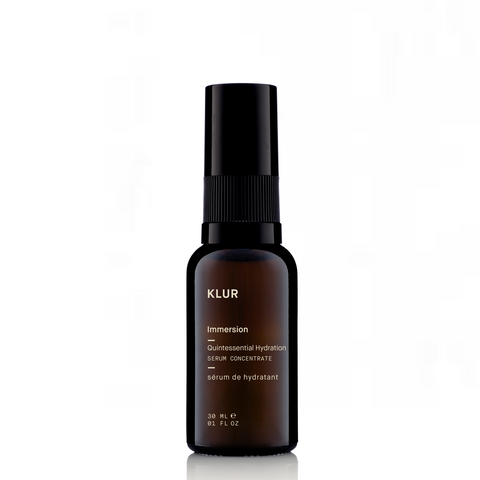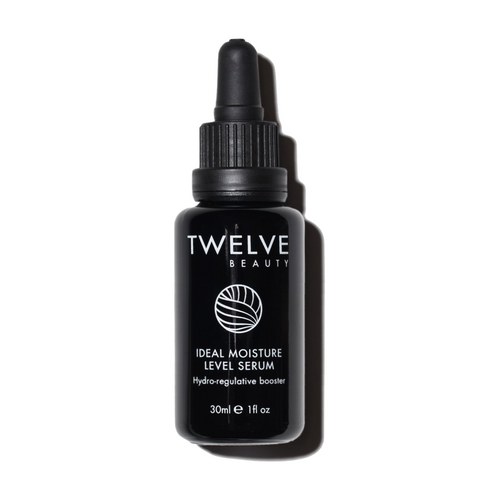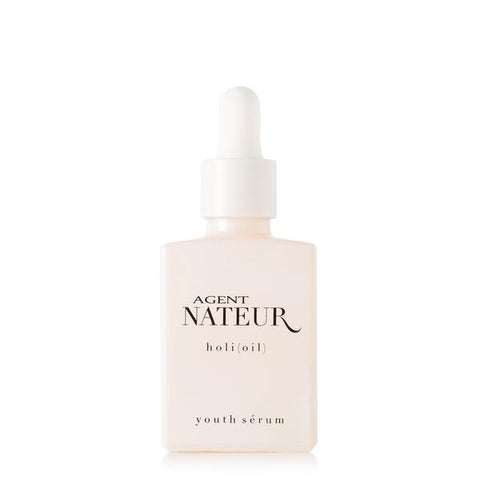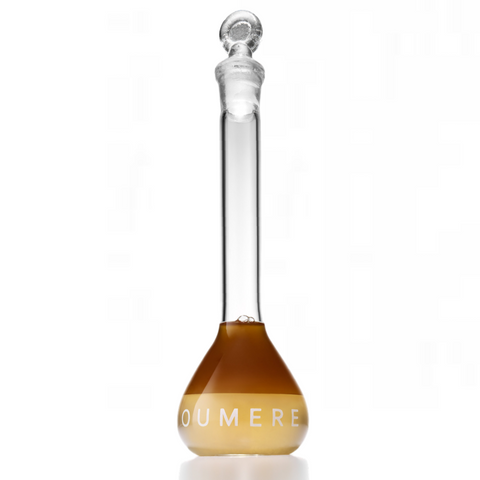Free shipping for HK orders HK$600+
Summer Skin Care DOs and DON'Ts
July 04, 2023
During summer, various skin issues such as dehydration, acne, sensitivity, dullness and pigmentation can arise due to heat, air conditioning, humidity, UV rays, and even sweat. Caring the skin the wrong way will only exacerbate these conditions.
Check out this guide, and find out all the dos and don'ts.
| Dehydration, Oiliness and Acne Caused by Heat and Air-Conditioning
As sebum secretion increases with a rise in temperature, a false sense of "moisture" may cause people to neglect hydration and moisture. The truth is, high temperature, UV rays and indoor air-conditioning can cause more rapid water evaporation, while damaging the skin barrier at the same time, further deteriorating the skin's ability in water retention and fighting off bacteria. As a result, the skin produces more, thicker oil to try maintain the barrier, leading to extra oiliness, which then can clog pores and result in acne.
| Dehydration, Oiliness and Acne Caused by Over-Cleansing
As mentioned above, sebum secretion increases with a rise in temperature, and dehydration can also pave ways to excess oiliness. In reaction to this sense of "greasiness", a lot of people tend to over-cleanse with harsh cleansers and cleansing brushes. However, harsh cleansers, often containing foaming agents like SLS and SLES, and cleansing brushes, can over-strip the skin of its natural oil, damage the skin barrier, and cause a decrease in the skin’s ability in retaining water and resisting bacteria. Not only does this lead to dryness and tightness, which will in turn cause the skin to over-compensate in sebum secretion, resulting in clogged pores and acne, it will also aggravate allergy, rosacea, eczema and other inflammation issues.
| Damages Caused by UV Rays
UV rays are another main reason for summer skin troubles.
Of the UV solar radiation that reaches the earth, about 5% is UVB, and up to 95% is UVA. While UVB is responsible for burning your skin, UVA, which is undeterred by cloudy skies or glass, penetrates deep into the skin and causes cumulative damages to our DNA at the cellular level. These damages may be initially invisible to the eye, but the fact that they are affecting everything from the surface to the deepest layers of the skin is indisputable, and it can take years for sun damage to become visible because of the depth at which the UV rays damage skin cells, i.e. the sun damages from your teenage years will start showing up in your late 20s and 30s, and those in your 20s and 30s will greatly accelerate the appearance of signs of aging in your 40s and 50s.
First of all, pigmentation, dullness, and sun spots. UV light exposure causes an inflammatory reaction in the skin, which triggers signals to be sent to the melanocytes as part of the body’s natural immune response. The melanocytes then overproduce the brown melanin pigment, resulting in visible tanned skin and pigmentation. In other words, it is a sign that your body is trying to protect against further DNA damage; and if your skin is burnt and peeling, it is a sign that the body is ridding itself of damaged skin cells.
Besides melanin-related issues, UV rays can also cause a decrease in the skin's function in retaining water and resisting bacteria. This can lead to dehydration, dryness, sensitivity, acne, and other inflammatory issues.
Moreover, daily UV exposure, even at a low-grade level, can lead to the production of harmful enzymes in the skin that break down collagen and elastic fibers. Combined with the fact that our body produces increasingly fewer hormones and less collagen from the age of about 25, this decline in collagen in our body causes the skin’s epithelial structures (tissue formed by several layers of cells) to weaken, which then thins out the skin and results in sagging and wrinkles.
Speaking about signs of aging, what many people don’t realize is that UVA radiation creates skin-damaging free radicals. These free radicals can lead to damages to all components of a cell, including DNA, proteins, lipids and its membrane, whilst setting off a chain reaction of cellular disruption whereby a healthy cell that is victimised by a free radical transforms into a free radical, ultimately, accelerating the appearance of signs of aging.
UV exposure can also cause an increase in a growth factor that promotes the growth of blood vessels in the skin. This is why badly photo-damaged skin can become mapped with veins or appear red.
| Glycation, Inflammation, Irritations and Dullness Caused by Sweat
Sweat itself is not harmful to the skin, however, it can cause various skin troubles.
First of all, areas of the body that are prone to sweating, such as the hairline and neck, can develop heat rash due to clogged sweat glands. Also, if dust or bacteria adheres to the area where sweat has accumulated, it can lead to skin irritation.
Then, there is the issue of friction, where the skin barrier is damaged because of constant rubbing of the skin from sweat. This can then lead to various troubles, from dehydration to acne, and inflammatory conditions.
Finally, when the proteins in our sweat combine with the sugars on our skin, glycation occurs, resulting in AGEs that can lead to issues such as clogged pores, sagging, and dullness. Because glycation is accelerated by high temperatures and UV rays, sweat is more likely to glycate during summer.
| Do Not Overly Remove Sebum
Sebum covers the surface of the skin and prevents water from evaporating. It is also involved in pH and microbiome regulation necessary. Therefore, if the skin is overly stripped of its natural sebum, the barrier will be damaged. Not only will this lead to dryness, dehydration, tightness, sensitivity and inflammation, as the skin's ability in retaining water and fighting off bacteria decreases, the skin will also produce more, thicker oil to try maintain the barrier, leading to extra oiliness, which can then clog pores and cause acne.
So don't fall into this vicious cycle, and forego cleansing brushes and harsh, foaming cleansers. Instead, choose a cleanser that effectively cleanses yet gentle in nature.
On the other hand, some people tend to use oil blotting paper during the day. While blotting off oiliness and shininess is okay, some oil blotting paper can remove too much sebum and make the skin dry, which then lead to even worse oiliness. Tissue-off is a better option.
Product Recommendation
EATH LIBRARY
Smooth Operator Purifying Cleansing Gel <- Click to shop
| Tissue Off Sweat and Avoid Excess Glycation
Sweating is healthy, don't get us wrong. But after you sweat, remember to tissue off by patting dry to avoid heat rash and irritations. Do remember not to rub though, as friction can damage the skin barrier.
Also, as mentioned above, since sweat is more likely to glycate during summer, and AGEs can lead to issues such as clogged pores, sagging, and dullness, it is important to incorporate anti-glycation ingredients into your skincare routine, such as niacinamide, L-glutathione, reseveratrol, hexylresorcinol, gingko, green tea, and turmeric, etc.
Product Recommendation
AGENT NATEUR
holi(lift) Ageless Lifting and Firming Serum <- Click to shop
| Keep Pores Clean and Exfoliate Regularly
The right way to deal with enlarged pores, blackheads, and acne is double cleanse daily, use a retinol product, and treat with a kaolin mask and acids weekly.
Remember how oils and water don’t mix? Impurities, including makeup, sebum, and some pollutants, are oil-based, thus simply cannot be thoroughly removed by a water-based cleanser. When you rely on one single water-based cleanser to cleanse and remove makeup at night and call it a day, some of those substances will remain on the skin even after rinsing with water, eventually congesting the pores.
Using an oil-based cleanser first, which is designed to remove such oil-based particles, can remove this first layer of impurities, giving way for the second water-based cleanser to really get to the skin and remove water-based debris such as sweat and dirt.
Product Recommendation
Agent Nateur
holi(cleanse) Cleansing Face Oil <- Click to shop
You may also want to use a cleanser enriched with charcoal. Charcoal is a well documented skin purifier capable of naturally removing impurities and excess oil, making it a great ingredient for skin prone to enlarged pores, blemishes and acne.
Product Recommendation
TWELVE BEAUTY
Charcoal Peace Calming Cleanser <- Click to shop
Three times a week, use an acid-based treatment to exfoliate and clear pores. AHAs (alpha-hydroxy acid) and PHAs (polyhydroxy acid) can dissolve the bond between dead skin cells to exfoliate, allowing spots to fade faster and skincare products to penetrate better. Whilst, BHA (beta-hydroxy acid), which is oil-soluble, can penetrate into and clear out pores, preventing acne and blackheads.
Acids may sound irritating to many, however, with the right formulation and concentration, they can be used by all skin types, even sensitive, rosacea, and eczema prone skin, to target acne, pigmentation, uneven skin tone, rough texture, and allow skincare products to penetrate better. What’s better, long-term use can also increase collagen and hyaluronic acid deposition and synthesis within the dermis, so the skin will appear more plumped, smooth and bouncy!
You can read more about the differences and effects of various types of AHA, BHA, and PHA here.
Product Recommendation
OUMERE
No. 9 Exfoliant <- Click to shop
Product Recommendation
Agent Nateur
holi(bright) Resurface Glass Face Mask <- Click to shop
Twice a week, use a kaolin clay-based mask. Commonly used in skin care products due to its ability to absorb excess oil or sebum, clear pores, prevent acne, and smooth skin, kaolin may also offer mild anti-inflammatory, antibacterial and healing benefits.
As it is gentler on the skin than other types of clay, it is suitable for all skin types, including sensitive and inflammatory skin.
Product Recommendation
TWELVE BEAUTY
The London Mask <- Click to shop
Product Recommendation
KLUR
Supreme Seed Delicate Purification Mask <- Click to shop
| Use Brightening Skincare Products All-Year Round
A lot of people tend to use brightening or depigmentation skincare products only when they see pigmentation. However, that would be too late.
Hyperpigmentation is multifactorial. When there is inflammation in the skin, which can be caused by UV damage, acne, picking and irritating the skin, free radicals, harsh cleanser, and hormonal fluctuations, such as pregnancy or taking contraceptive pills, a signal is sent to the melanocytes as part of an immune response. The melanocytes then overproduce the brown melanin pigment, resulting in the hyperpigmentation on the skin that we see. Whilst, genetic, metabolic, hormonal and environmental factors will determine their severity, how long they will linger, and how they are best treated.
While pigmentation, dullness and sunspots seem to get more severe during summer because of sun exposure, one shouldn't only use brightening products then or occasionally when they start seeing pigmentation and sunspots, as once they become visible, it could only mean that there are tons of already pigmented cells accumulated at all layers of the skin, as they are the result of damages from your teenage years. And because melanocytes are literally being stimulated every single day, matters will only get worse in a multiplied way as you age.
Remember, when it comes to pigmentation and sun spots, prevention from a young age, 365 days a year, is key.
Product Recommendation
EATH LIBRARY
The Pure Wonder Active Serum <- Click to shop
Product Recommendation
ANFISA
Ân-dew 10% Azelaic Acid + PHA Serum <-Click to shop
Product Recommendation
KLUR
Brilliant Light Multi-Correction Repair Serum <- Click to shop
| Cool and Hydrate the Skin After Being in the Sun
Sunburn can cause the skin to turn instantly red but how it finally turns out greatly depends on how it is treated within 72 hours post-exposure.
The skin will become red and inflamed within a few hours post UV exposure. This process peaks in 8 to 24 hours and the redness usually subsides in 2 to 3 days. Melanin production also progresses during that time. In about 3 days, they settle and turn the skin dark. Effective post-sun care is thus vital in the first 3 days.
Because UV rays also damage the skin barrier and dry the skin, the skin should be cooled first and foremost to calm down inflammation.
Now, some may recommend using a sheet mask that has been cooled in the refrigerator. While the coldness can help bring down redness and inflammation, do not expect other ingredients to work as effectively, as the coldness will cause your pores to tighten, making it difficult for the ingredients to penetrate the skin. Thus the best, most cost-efficient way is to simply wrap some ice in a paper towel, then gently ice the skin for a few minutes.
Afterwards, remember to hydrate and moisturize well.
| Hydrate
After cleansing, the first step is to use a toner.
Think about how you wash the dishes. When you squeeze dish-washing liquid to a dry sponge, it won’t get distributed evenly on the sponge, and you won’t be able to clean the dishes effectively. The skin after cleansing is like that dry sponge. Without that extra water in the skin, all the skincare products you put on the skin afterwards won’t get absorbed and distributed in the skin; whereas if you put serums, oils or moisturizer on damp skin, they will be able to penetrate much better.
Better yet, besides hydrating molecules, hydrating toners these days are often enriched with other ingredients such as botanical extracts and vitamins (although typically in less concentrations than serums), and depending on the formula, they can provide antioxidant, anti-inflammatory, soothing, calming, or brightening benefits. This can further maximise the benefits of follow-up products.
As trans-epidermal water loss can happen straight after cleansing, so it is best to apply a toner within 60-seconds. And don’t wait for it to completely absorb or dry down. The next product, most likely a serum, should be applied when the skin is still wet from the toner.
Do however avoid anything that contains stripping alcohol (not all alcohols are stripping though, for details, refer to Bad Alcohol vs. Good Alcohol For The Skin.
Product Recommendation
TWELVE BEAUTY
Ultra Revitalising Elixir <- Click to shop
| Use a Hydrating Serum After Other Serums
People often think that water loss happen mostly during colder months, but the truth is, air-conditioning, the sun, and sweating also accelerate trans-epidermal water loss. To compensate for this water loss, it is essential to replenish the skin with extra hydration.
A hydrating serum, unlike a moisturiser that is generally high in occlusives that lock in hydration rather than adding back to the skin, delivers a cocktail of highly active and hydrating ingredients that are smaller in molecular sizes to penetrate deeper into the dermis without clogging pores. Some of them also contain skin plumping ingredients like peptides, so that the skin will look hydrated, and plumped.
The most important thing though, is to look for a hydrating serum that contains a wide variety of hydrating ingredients, rather than one that uses hyaluronic acid as its main ingredient, and definitely not one that highlights ultra low-weight or nano-sized hyaluronic acid as they can cause inflammation (for detailed explanation see this article: Hyaluronic Acid May Make Your Skin Worse.
If you want to target other skin concerns at the same time, use the hydrating serum after other serums. To pull water to the skin surface, hydrating serums often have a larger molecular size, thus using a hydrating serum before other serums may hinder penetration.
Product Recommendation
KLUR
Immersion Serum Concentrate <- Click to shop
Product Recommendation
TWELVE BEAUTY
Ideal Moisture Level Serum <- Click to shop
| Add a Few Drops of Oil
As mentioned above, the skin barrier is easily disrupted by heat, air-conditioning and UV rays during summer. Now, this barrier is made up of lipids, but the levels of these lipids decline with age. Thus in order to help nourish it back to health, it is vital to replenish the skin with oils, especially for genetically dry skin that already lacks oil from the start.
By replenishing the skin with lipids, antioxidants, vitamins, minerals and polyphenols that are abundant in oils, not only will the skin feel moisturized, the skin will also be able to fortify itself, retain optimal moisture, fight free radicals, stimulate collagen production, and maintain a healthier, stronger barrier to effectively improve skin issues such as dryness, eczema, irritations, oiliness and wrinkles, thereby slowing the aging process.
By building stronger barrier functions via oils, the skin will be better able to lock in moisture naturally, which in turn stops the skin from over-producing sebum to try in maintain the barrier.
Don’t worry, well-formulated oil serums are not greasy these days, plus all you need is 3-5 drops at a time. During summer, focus on using it in the evenings, but if you are sitting in the air-conditioned room all day, you may also want to use two drops in the mornings before your moisturizer.
Oh, and remember to use it on damp skin!
Product Recommendation
AGENT NATEUR
holi(oil) Ageless Face Serum <- Click to shop
Product Recommendation
OUMERE
Serum Bioluminelle™ <- Click to shop
| Or Add a Light Moisturizer
A lot of people tend to forgo moisturizers during summer. Now, for those that find oils enough without the need of a moisturizer, that is fine. Although oils are emollients, not occlusive ingredients, their unique essential fatty acid content do help prevent water loss and maintain water content in the skin.
However, if you do not like using oils, or if you're on the extra dry or sensitive side, it is important to use a moisturizer during summer.
We always recommend using a light moisturizer though, instead of a heavy one that contains a lot of occlusive ingredients such as petrolatum, lanolin, mineral oil, beeswax, and shea butter.
There are two main reasons.
Heavy moisturizers impede the natural cycle of skin turnover by keeping the unwanted, dead cells stuck to the skin surface, instead of letting them shed naturally. Not only will this make the skin look dull and textured, it will also prevent skincare ingredients from being absorbed. In other words, no matter how much water and oil you give the skin, your skin will still feel dehydrated and dry, as nothing is getting past this thick layer of dead skin cells! Worse yet, lines that aren’t even actually there will start appearing because of the uneven texture!
The skin has a naturally built-in function of hydrating itself. When heavy moisturizers are continuously applied to the skin, the cells in the epidermis would send a signal to the cells in the dermis telling them there is enough hydration so there is no need for more, instead of asking them to move hydration up to the skin surface. Gradually, the cells in the dermis would become lazy, go dormant, and ultimately stop regulating its own hydration level, resulting in drier and less elastic skin.
A more effective way to care for the skin is thus use a light emulsion / hydrator after the oil step to nourish the cells, seal all the nutrients in, and prevent trans-epidermal water loss, yet without impeding the skin’s natural hydrating function. Or, you may want to use a lightweight regenerative sleeping mask in place of a moisturiser that aims to provide the skin with nutrients and support its renewal process at night.
Product Recommendation
EATH Library
All Day Radiance Light Concentration Cream <- Click to shop
Product Recommendation
MARIE REYNOLDS LONDON
Skin Quencher <- Click to shop
Also in The Journal

The Anti-Aging Gold Standard: How Retinol Reshapes The Skin
November 12, 2025
Learn why retinol is the gold standard for anti-aging, how it works, what similar ingredients exist, and some common myths and misconceptions.

The Gut-Skin Connection: The Path to Healthy Skin
October 26, 2025
Acne, eczema, rosacea, and sensitivity can all be linked to the gut health, and even gluten? Learn all about the connection between the gut and the skin.

The Secret to Reversing Skin Aging! How Growth Factors & Peptides Help Turn Back the Clock
October 13, 2025
Tired of wrinkles, sagging skin, lack of elasticity, inflammation, dryness, and even hair loss? Learn how growth factors and peptides reverse skin aging.
+Recent Articles
-
The Anti-Aging Gold Standard: How Retinol Reshapes The Skin
November 12, 2025
-
The Gut-Skin Connection: The Path to Healthy Skin
October 26, 2025
-
The Secret to Reversing Skin Aging! How Growth Factors & Peptides Help Turn Back the Clock
October 13, 2025
-
The Best Ways and Times to Take Different Supplements
August 19, 2025
-
Luxury vs. Budget-Friendly Skincare Products——What Are Their Differences?
August 06, 2025
-
How to Prevent and Improve Post-Inflammatory Hyperpigmentation (PIH)
July 10, 2025
-
How to Prevent and Improve Post-Inflammatory Erythema (PIE)
July 08, 2025
-
The Ultimate Cleansing Guide to Improve Skin Conditions
June 03, 2025
-
Do You Have Sugar Face? How Does Sugar Affect Our Skin and Appearance?
May 20, 2025
-
Do You Have Gluten Face? How Does Gluten Affect Our Skin and Appearance?
April 15, 2025
Subscribe to get skincare knowledge delivered to your inbox!











